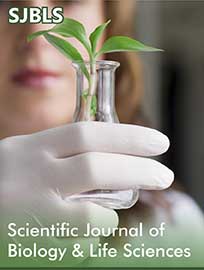 Research Article
Research Article
The Response of Egyptian Spinach and Vegetable Amaranth Microgreens to Different Light Regimes
Peter A.Y. Ampim1*, Eric Obeng1, Ernesto Olvera Gonzalez2, Aruna Weerasooriya1, Godson O. Osuji1 and Deland J. Myers Sr.1
1College of Agriculture and Human Sciences, Prairie View A&M University, USA
2Technological Institute of Pavilion of Arteaga, Aguascalientes, Mexico
Peter A.Y. Ampim, College of Agriculture and Human Sciences, Prairie View A&M University, Texas, USA.
Received Date: February 11, 2020; Published Date: March 24, 2021
Abstract
Production of specialty microgreens under controlled environments can help increase their supply in Texas. This experiment was carried out to evaluate the effects of light regimes on the growth of Egyptian spinach and vegetable amaranth microgreens in a grow tent. Seeds were planted in 10.2 × 10.2 cm trays containing promix potting soil. Egyptian spinach and vegetable amaranth received 6 light treatments which includes red, yellow, green, blue, white, and natural light. Light properties of all the light treatments were 1.66 mol m-2 d-1 for daily light integral (DLI), 40 μmol m-2 d-1 for photosynthetic photon flux density (PPFD) and 11.5 hours for photoperiod. Each tray received 40 ml of water at 48 hours intervals. Environmental factors such as CO2, temperature, and relative humidity were adjusted to simulate greenhouse conditions. This study was set up in a completely randomized design with three replications. Microgreens were harvested at three weeks after planting when the plants reached their first true leaf stage. The data collected including plant height, SPAD reading, and microgreens yield was analyzed using the JMP software at P< 0.05. Plant height of Egyptian spinach microgreens increased under blue and natural light. However, plant height for vegetable amaranth microgreens increased for all the light treatments except for yellow light. Increases in SPAD readings were observed for Egyptian spinach microgreens growing under yellow, green, blue, white light, and natural light. Vegetable amaranth did not show any differences in SPAD reading for the light treatments. A decrease in yield was observed for vegetable amaranth microgreens when it grew under blue light, but it increased under natural and green light. Light treatment did not affect yield of Egyptian spinach microgreens.
Keywords: Microgreens; LED lights; Specialty vegetables; Controlled environment production; Grow tent
-
Peter A.Y. Ampim, Eric Obeng, Ernesto Olvera Gonzalez, Aruna Weerasooriya, Godson O. Osuji, Deland J. Myers Sr. The Response of Egyptian Spinach and Vegetable Amaranth Microgreens to Different Light Regimes. Sci J Biol & Life Sci. 1(3): 2021. SJBLS.MS.ID.000512.





